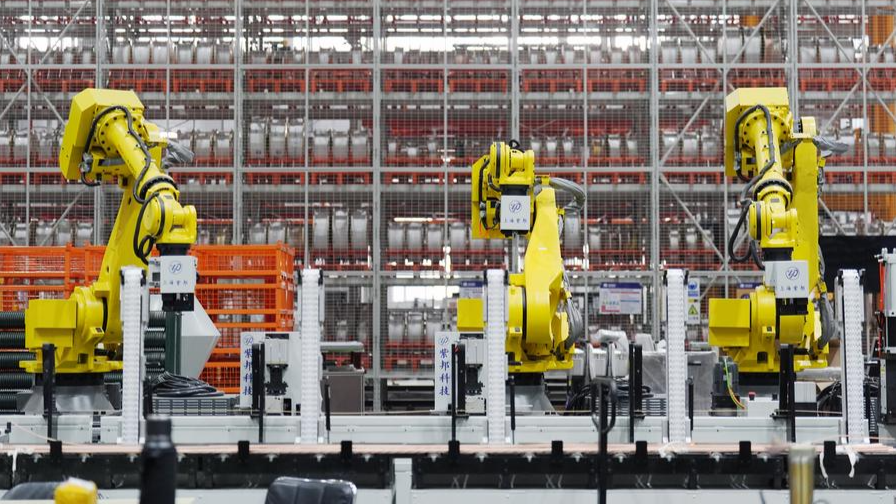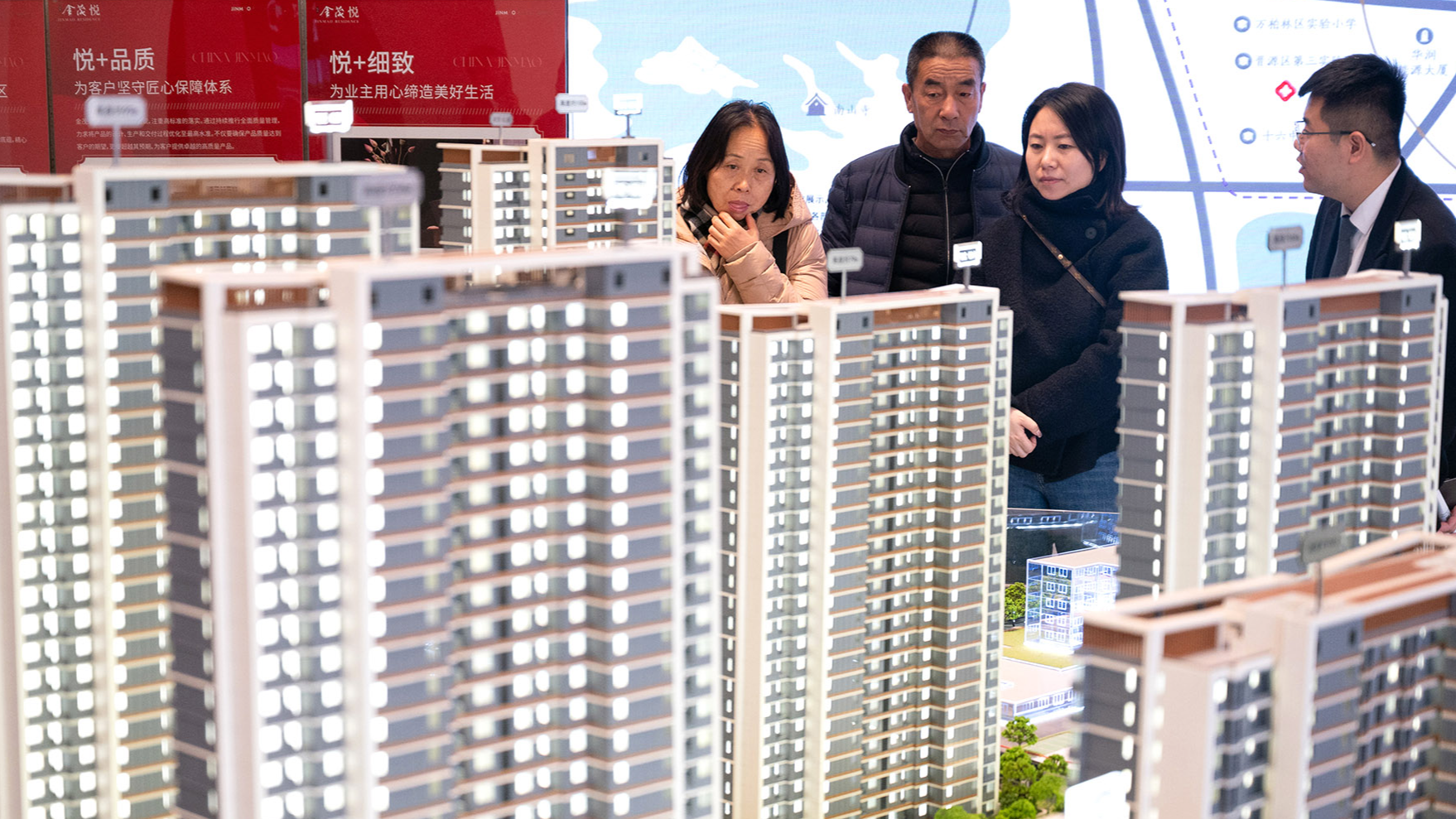
BEIJING - China's consumer spending in May posted its strongest growth in nearly one and a half years, as the country's supportive policies helped boost consumption and economic activity.
The retail sales of consumer goods, a major indicator of China's consumption strength, grew 6.4 percent year-on-year in May, accelerating from a rise of 5.1 percent registered in April and marking the fastest growth since December 2023, according to the National Bureau of Statistics (NBS).
From January to May, the retail sales of consumer goods rose 5 percent year-on-year, also accelerating from the 4.7 percent growth in the first four months, according to the NBS.
Factors supporting consumption growth in May included the government's consumer goods trade-in program, the "618" shopping festival that began in May this year, and the expansion of the country's visa-free entry policy, NBS spokesperson Fu Linghui told a press conference on Monday.
ALSO READ: China's consumer goods trade-in program spurs 1.1 trillion yuan in sales
The combined retail sales of consumer goods related to trade-ins grew rapidly. In breakdown, sales of household appliances, audio-visual equipment, communication devices, cultural and office supplies and furniture surged by as much as 53 percent year-on-year in May, contributing 1.9 percentage points to the overall increase in total retail sales of consumer goods, Fu noted.
The country's online retail sales maintained solid growth, with that of physical goods expanding 6.3 percent year-on-year during the first five months, accounting for 24.5 percent of the total retail sales.
Fu said that China's economy has maintained steady momentum, with the consumption market showing increased vitality as the benefits of the consumer goods trade-in program continue to take effect.
China's economy grew by 5.4 percent year-on-year in the first quarter of 2025, up from the 5 percent full-year growth rate recorded in 2024. Economic data for the second quarter and the first half of the year is scheduled to be released on July 15.
Industrial output
Monday's data also showed that China's industrial sector recorded steady expansion last month as innovation-driven industries continued to offer strong growth momentum.
China's value-added industrial output expanded 5.8 percent year on-year in May, official data showed.
The manufacturing sector saw its value-added output climb 6.2 percent year-on-year last month, with that of equipment manufacturing and high-tech manufacturing up by 9 percent and 8.6 percent, respectively, according to the NBS.

In the first five months of this year, the country's industrial output gained 6.3 percent compared to a year ago, the data showed.
The industrial output is used to measure the activity of large enterprises each with an annual main business turnover of at least 20 million yuan (about $2.79 million).
With effective policy support and ongoing upgrades, the industrial sector maintained relatively rapid expansion last month, demonstrating strong resilience and potential, Fu said.
ALSO READ: China unveils measures to expand, upgrade domestic services consumption
Fu highlighted robust expansion in high-end manufacturing, digital economy, and the new energy sector, all of which have propelled steady industrial transformation and economic growth.
Monday's data showed the production of 3D printing equipment, industrial robots and new energy vehicles surged 40 percent, 35.5 percent and 31.7 percent year-on-year in May, respectively. In the first four months of this year, the country's industrial profits amounted to nearly 2.12 trillion yuan, up by 1.4 percent from the same period in 2024.
Fixed-asset investment
Official data also showed that China's fixed-asset investment went up 3.7 percent year-on-year in the first five months of 2025.
Excluding the property sector, the country's fixed-asset investment grew 7.7 percent year-on-year during this period, according to the NBS.
Infrastructure investment rose 5.6 percent year-on-year, while manufacturing investment increased 8.5 percent.
READ MORE: China's industrial output up 6.1% in April
By industry, investment in the primary industry increased 8.4 percent year-on-year, while secondary industry investment rose 11.4 percent. The tertiary industry saw a 0.4 percent decrease in investment.
In the high-tech sector, investment in information services surged 41.4 percent, while investment in aviation, spacecraft, and equipment manufacturing increased 24.2 percent. Investment in computer and office equipment manufacturing grew 21.7 percent, and professional technical services investment rose 11.9 percent.
Home prices
Meanwhile, China's home prices in 70 large and medium-sized cities continued the downward trend in May, though the pace of decline slowed, the NBS said.
"In May, home prices in 70 major cities continued to fall on a yearly basis, but the pace of decline further eased," said NBS statistician Wang Zhonghua.

New home prices in first-tier cities decreased by 1.7 percent year-on-year, narrowing by 0.4 percentage points compared to the previous month, according to the NBS data. Among these cities, Shanghai saw an increase of 5.9 percent, while Beijing, Guangzhou, and Shenzhen experienced declines of 4.3 percent, 5.8 percent, and 2.6 percent, respectively.
In second- and third-tier cities, new home prices fell by 3.5 percent and 4.9 percent year-on-year, with drops narrowing by 0.4 and 0.5 percentage points, respectively.
In May, prices of second-hand homes in first-tier cities declined by 2.7 percent year-on-year, a reduction of 0.5 percentage points from the previous month, according to the NBS. Specifically, Beijing, Shanghai, Guangzhou, and Shenzhen saw declines of 0.7 percent, 0.1 percent, 6.6 percent, and 3.2 percent, respectively.
ALSO READ: China home prices cool with narrowing declines
Second- and third-tier cities also reported year-on-year decreases in prices of second-hand homes of 6.1 percent and 6.9 percent, with reductions narrowing by 0.4 and 0.5 percentage points, respectively.
NBS data also showed that home prices in 70 large and medium-sized cities dipped in May on a month-on-month basis.
Urban unemployment
The NBS added that the surveyed urban unemployment rate on average in China stood at 5 percent in May, down 0.1 percentage points from April.


